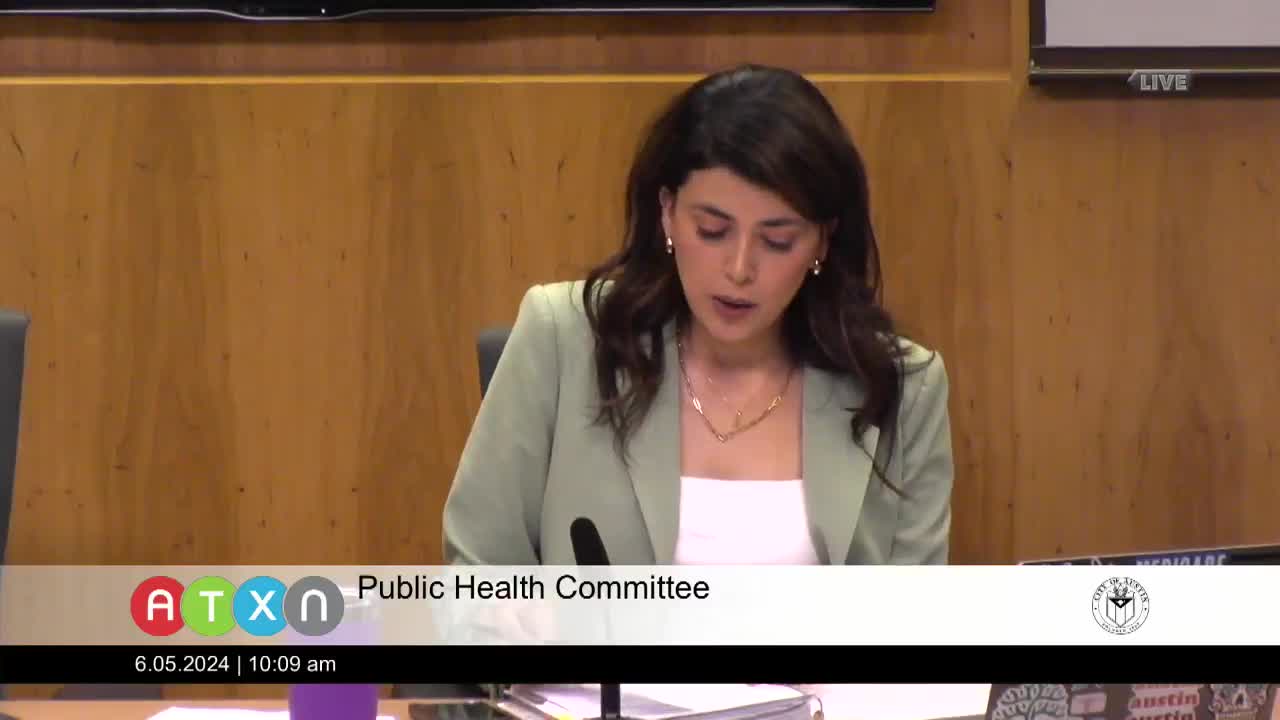Community health workers recognized as vital public health heroes
June 05, 2024 | Austin, Travis County, Texas

This article was created by AI summarizing key points discussed. AI makes mistakes, so for full details and context, please refer to the video of the full meeting. Please report any errors so we can fix them. Report an error »

In a recent government meeting, Austin Public Health (APH) provided an extensive update on the role and impact of community health workers (CHWs) in the city. Estefani Alivares, a program supervisor with the health equity unit, emphasized the critical role CHWs play as trusted messengers and influencers within the community, particularly during the COVID-19 pandemic.
Alivares highlighted that CHWs have been officially recognized as a professional title, which is a significant step in acknowledging their contributions to public health. The city currently employs 24 CHWs, with a mix of full-time and temporary positions funded through grants and city resources. The meeting underscored the need for increased funding to support these essential workers, as only two positions are currently city-funded.
The briefing detailed various programs that utilize CHWs, including maternal and infant outreach, street outreach initiatives, and mobile vaccination efforts. These programs aim to address health disparities exacerbated by the pandemic, particularly among vulnerable populations. Alivares noted that CHWs are instrumental in connecting community members to vital health resources and services.
A key development discussed was the establishment of a certified training site for CHWs, which has allowed APH to train and certify new community health workers. The first cohort graduated 32 individuals, primarily from the community, demonstrating a commitment to building local capacity. The training program aims to provide continuing education opportunities and maintain certification for existing CHWs.
The meeting also touched on the intersection of CHWs with various public services, including outreach to the homeless population. Alivares expressed a vision for integrating CHWs into all public service efforts, emphasizing their value in enhancing community engagement and health outcomes.
Overall, the discussions highlighted the essential role of community health workers in Austin's public health strategy, the ongoing efforts to expand their training and resources, and the need for increased support to sustain and grow these vital programs.
Alivares highlighted that CHWs have been officially recognized as a professional title, which is a significant step in acknowledging their contributions to public health. The city currently employs 24 CHWs, with a mix of full-time and temporary positions funded through grants and city resources. The meeting underscored the need for increased funding to support these essential workers, as only two positions are currently city-funded.
The briefing detailed various programs that utilize CHWs, including maternal and infant outreach, street outreach initiatives, and mobile vaccination efforts. These programs aim to address health disparities exacerbated by the pandemic, particularly among vulnerable populations. Alivares noted that CHWs are instrumental in connecting community members to vital health resources and services.
A key development discussed was the establishment of a certified training site for CHWs, which has allowed APH to train and certify new community health workers. The first cohort graduated 32 individuals, primarily from the community, demonstrating a commitment to building local capacity. The training program aims to provide continuing education opportunities and maintain certification for existing CHWs.
The meeting also touched on the intersection of CHWs with various public services, including outreach to the homeless population. Alivares expressed a vision for integrating CHWs into all public service efforts, emphasizing their value in enhancing community engagement and health outcomes.
Overall, the discussions highlighted the essential role of community health workers in Austin's public health strategy, the ongoing efforts to expand their training and resources, and the need for increased support to sustain and grow these vital programs.
View full meeting
This article is based on a recent meeting—watch the full video and explore the complete transcript for deeper insights into the discussion.
View full meeting
